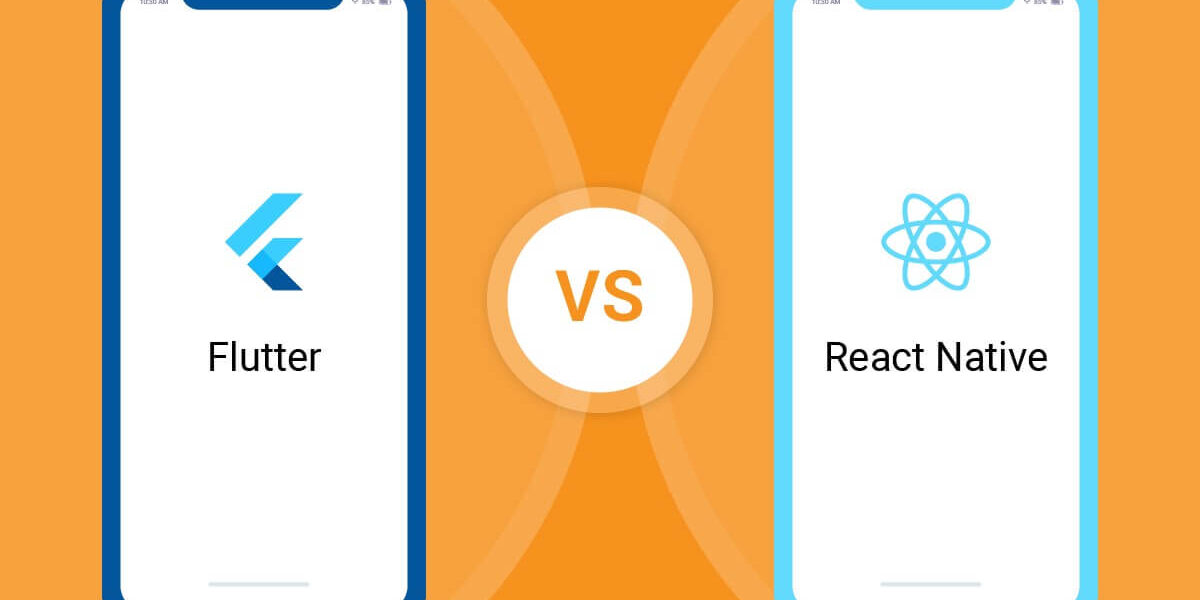Flutter and React Native are two of the quickest developing cross-stage advancement dialects to fabricate local portable applications for iOS and Android gadgets. In this article, we will analyze both improvement structures that may assist you with choosing which system will serve you the best for your next versatile application advancement project.
Versatile application improvement is developing and pretty much every organization needs a portable application. Android and iOS are two famous portable working frameworks. There are three distinct stages classes to construct portable applications: local, mixture, and cross-stage. Local stages are given by the portable OS engineers, Apple and Google. Quick is the programming language that is prescribed by Apple to construct local iOS applications. Java and Kotlin are the two mainstream programming dialects to fabricate local Android applications.
Flutter versus React Native – Basic presentation
Flutter
Flutter is Google’s UI tool stash for building excellent, locally aggregated applications for portable, web, and work area from a solitary codebase.
Flutter initially created by a Google group, is an open-source project. Right now, both Google and the Flutter open source local area add to its turn of events. Flutter is written in C, C++, and Dart.
React Native
React Native is a cross-stage portable application structure to assemble local versatile applications. Respond Native, created by Jordan Walke of Facebook in March 2015, is an open-source portable application system that is utilized to construct local Android, iOS, macOS, and Windows applications. Respond Native is authorized under MIT permit. Respond Native falls in the class of cross-stage structures. That implies, you compose code in one programming language that objectives numerous stages.
React Native is created in C++, Java, JavaScript, Objective-C, and Python and permits designers to compose applications in JavaScript, Java, Objective-C, and Swift.
Not at all like React, React Native doesn’t utilize Virtual DOM yet runs a foundation interaction that deciphers the JavaScript to the portable OS UI components on the gadget.
Flutter versus React Native – Maturity
Both Flutter and React Native are still very youthful when you contrast with other programming dialects. Respond Native was begun in March 2015 and Flutter was at first delivered in 2017. Today, the current adaptation of React Native is 0.63.1 and the current form of Flutter is 1.20. As you can envision, both are as yet in their beginning phases.
In view of the advancement cycle, and highlight discharges, Flutter is by all accounts moving at a quicker speed than React Native.
Both Flutter and React Native are still new items and gradually getting selection and new highlights. Respond Native is by all accounts more develop because of the way that React and JavaScript are the dialects behind it.
Flutter versus React Native – Popularity
Both Flutter and React Native are not a long way from one another with regards to notoriety. On Github, Flutter has 102k stars contrast with React Native that has 90.5k stars.
As per Statista, React Native is liked by 42% engineers in contrast with 39% designers favor Flutter.
Flutter Vs React Native
As you can see from the above outline, React Native is more famous yet Flutter isn’t a long ways behind.
Flutter versus React Native – Dart versus JavaScript
Flutter utilizes Dart programming language that was created and delivered by Google in 2011. As Google depicted it, Dart is a customer upgraded language for quick applications on any stage. The current variant of Dart language us 2.1.
While Dart might be simpler to utilize and receive for Java designers, it has not acquired a lot of force among engineers and there are infrequently any enormous enterprises that are vigorously put resources into Dart improvement.
React Native uses JavaScript to construct cross-stage applications. JavaScript is one of the ordinarily utilized web programming dialects and most text style end web designers know about JavaScript. Knowledge of React language can likewise accelerate React Native turn of events.
In the event that you are a web engineer who knows about React and JavaScript, you may discover building React Native applications pretty clear. There is a slight expectation to absorb information. In case you’re not a major JavaScript fan and like to code in object arranged programming, you may appreciate Dart and Flutter.
Flutter versus React Native – Key Features
Allow us to look at key highlights of Flutter and React Native from their authority pages.
Flutter Key Features
Quick Development
Paint your application to life in milliseconds with Stateful Hot Reload. Utilize a rich arrangement of completely adjustable gadgets to assemble local interfaces in minutes.
Expressive and Flexible UI
Rapidly transport highlights with an emphasis on local end-client encounters. Layered engineering considers full customization, which brings about unbelievably quick delivering and expressive and adaptable plans.
Local Performance
Flutter’s gadgets fuse all basic stage contrasts, for example, looking over, route, symbols and textual styles, and your Flutter code is accumulated to local ARM machine code utilizing Dart’s local compilers.
React Native Key Features
Make local applications utilizing React
React Native uses the force and adaptability of React to fabricate local applications for iOS and Android. React Native can be utilized in your current versatile applications or you can make local portable applications without any preparation for iOS and Android.
React Native code is JavaScript. A large portion of the web engineers know about JavaScript and composing versatile applications utilizing React Native doesn’t need portable designers to get familiar with another dialect. We engineers become portable designers. Respond Native renders to local stage UI that implies same UI components are utilized to make UIs as any local application. Respond Native applications look precisely like the local applications.
Numerous stages, one React. Make stage explicit renditions of segments so a solitary codebase can share code across stages. With React Native, one group can keep two stages and offer a typical innovation—React.
Local Development For Everyone
Respond Native allows you to make genuinely local applications and doesn’t bargain your clients’ encounters. It gives a center arrangement of stage rationalist local segments like View, Text, and Image that map straightforwardly to the stage’s local UI building blocks.
Consistent Cross-Platform
React segments wrap existing local code and connect with local APIs by means of React’s definitive UI worldview and JavaScript. This empowers local application improvement for totally different groups of designers, and can allow existing local groups to work a lot quicker.
Quick Refresh
Consider your to be when you save. With the force of JavaScript, React Native allows you to emphasize at lightning speed. Not any more trusting that local forms will wrap up. Save, see, rehash.
Flutter versus React Native – Project support
Flutter delivered by Google in 2017 has been kept up by Google group and open source local area. Open source project repo is accessible here:
Facebook delivered React Native in 2015 and has been keeping up by Facebook and open source local area.
Flutter versus React Native – Who is utilizing them
A portion of the famous organizations that are utilizing Flutter incorporate Realtor.com, The New York Times, Square, Google Assistant, Ebay and Capital One.
The rundown of organizations that are utilizing React Native incorporates Facebook, Instagram, Coinbase, Shopify, Tableau, Oculus, Skype, Discord, Bloomberg, Pinterest, Tesla, Uber Eats, Walmart, and Salesforce.
Obviously, React Native is more mainstream and being utilized by more well known organizations.
Flutter versus React Native – Salary
Normal compensation of a React Native designer is $92,933 each year as indicated by Indeed.
Normal compensation of a React Native designer is $96,016 each year as per Glassdoor.
Pay rates of designers rely upon a few variables including area, number of long stretches of involvement, organization, and project and may differ on different elements.
In Flutter projects, you’ll gain proficiency in,
- Prologue to Flutter
- Set Up Flutter On Windows
- Introduce Flutter on Windows with Visual Studio Code
- Make A First Flutter App In Visual Studio Code
- What Are Stateless And Stateful Widget In Flutter
- Google Firebase Email/Password and Google Login In Flutter
- SharedPreferences In Flutter
- Unique finger impression Authentication In Flutter
- Flutter Push Notification Using Firebase
- Firebase Firestore CRUD Operation In Flutter
- Instructions to Set App Icon In Flutter
- Base Navigation Tab Bar In Flutter
- Structure Validation In Flutter
- State Management Using Provider In Flutter
- Pagination In Flutter Using Firebase Cloud Firestore
- Talk App Data Structure In Firebase Firestore
- Delivery APK In Flutter
- Flutter REST API
- Carry out Charts In Flutter
- Talk App In Flutter Using Google Firebase
- You can begin learning React Native here.
- Official React Native site documentation is here.
- Need to learn more React Native?
- Here is a video that is a prologue to React Native,
- Synopsis
Flutter and React Native are two of the quickest cross-stage application advancement stages. In this article, we thought about Flutter versus React Native, taken a gander at different boundaries and subjects and ideally you discovered this article valuable and it can help you settle on the decision among Flutter and React Native for your next portable application advancement project.








